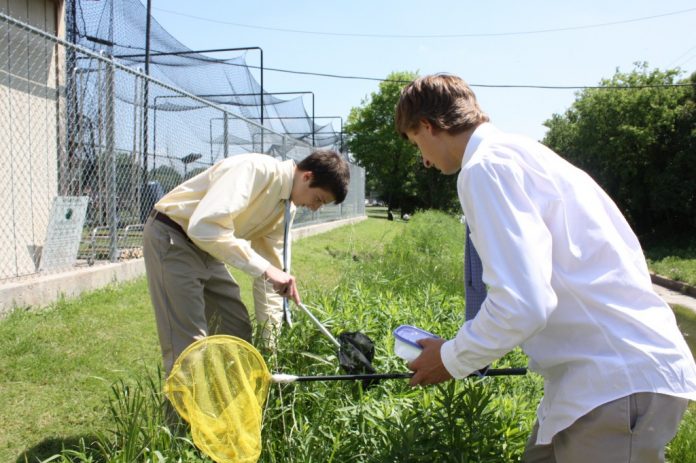The famous freshman bug project, an event listed under “Traditions” on the Jesuit College Preparatory School of Dallas Wikipedia page, was just completed last Monday, May 6th, as 280 freshmen turned in their projects. The collection, the most well-known event among freshmen, has a rich history, having existed for over 30 years.
Chase Ryan ’16, a student of Mr. Bob Lanier’s class heard about the project before he even knew what Jesuit was, “I moved to Dallas in 2008 from Maryland and midway through my fifth grade year I had already heard all about the project. It’s just that famous.”
 The bug project serves as the first major project a Jesuit student encounters during his first year at Jesuit, giving the freshmen an opportunity to get out in the field. Biology teacher Jonathan Short says that the purpose of the project is to “increase the students knowledge and classification of living organisms and get [the students] out in the field to collect their own organisms.” Short also added that “students also learn how to further understand biology, as a whole, [and] learn what characteristics [are] unique and different from one another.”
The bug project serves as the first major project a Jesuit student encounters during his first year at Jesuit, giving the freshmen an opportunity to get out in the field. Biology teacher Jonathan Short says that the purpose of the project is to “increase the students knowledge and classification of living organisms and get [the students] out in the field to collect their own organisms.” Short also added that “students also learn how to further understand biology, as a whole, [and] learn what characteristics [are] unique and different from one another.”
The project requires the collection of insects ranging from grasshoppers to box elder bugs. The project is worth three test grades and students are given the whole year to do it. There are ten orders of bugs needed, five bugs per order, and there must be at least three different species within each order.
Bugs as odd as ant lions and the famous, highly-coveted, lacewings are needed for the project. John Michael Priddy ’16 described his catching techniques as sneaky, saying that they require quick reflexes, “I was way too scared to catch the bugs such as bees or wasps so I would creep up behind them and trap them on the ground and as time went on and the more bugs I caught, I found myself less afraid.”
Possibly the hardest part of the entire project is pinning each bug to a styrofoam board. Each insect is required to be pinned, and all 50 insects should have a pin through its thorax, but the insects whose thoraxes are too small must be glued to a flash card. Butterflies, usually the center piece to each person’s board, have special rules for pinning them, as do cockroaches and beetles.
insects should have a pin through its thorax, but the insects whose thoraxes are too small must be glued to a flash card. Butterflies, usually the center piece to each person’s board, have special rules for pinning them, as do cockroaches and beetles.
The project this year differed for Dr. Todd Gruninger’s honors biology class, though. Instead of the traditional 50 bugs, Gruninger’s classes were required to collect 7 insects out of two orders of their choice and extract DNA from two of the bugs. Trevor Lastelick ’16, a student in the class, said the project was very intriguing. Lastelick went on to say, “When we were first assigned this project, we all thought this would be easy.” Lastelick continued, “Although collecting the bugs was easy, extracting DNA from the bugs was more interesting than anything.”
Upon finishing the project, there is no doubt that the freshmen feel a sense of accomplishment. The bug project is a learning experience for all freshmen, and because of the project, insects are always seen in a different light. Luckily for freshmen, the biology bug project has finally come to an end.
Completed projects can be found on display in the biology labs.






